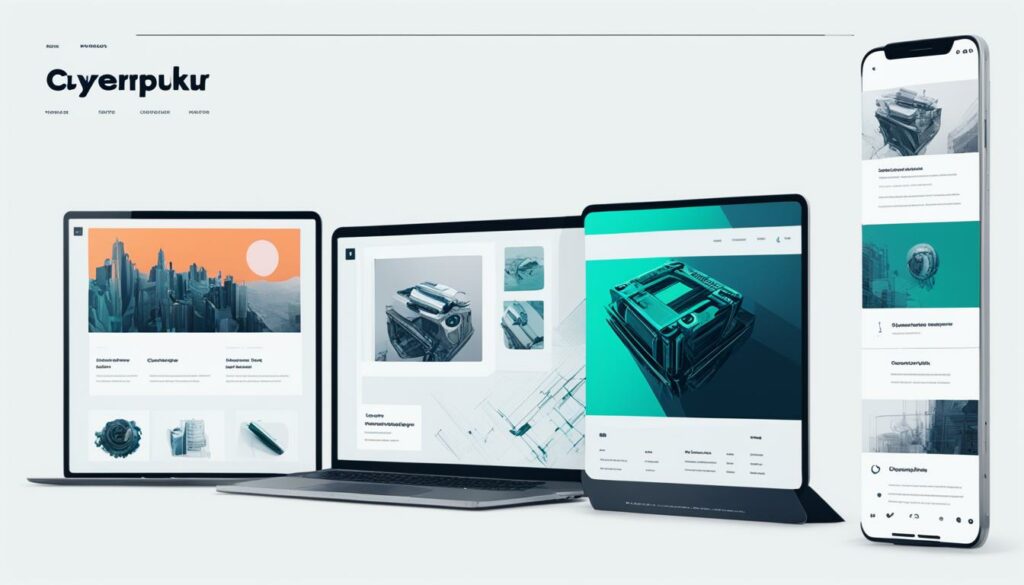Are you looking to enhance user engagement on your website? Want to know the best practices for creating an intuitive and user-friendly interface? Dive into the world of user interface (UI) design and discover how you can captivate your audience and maximize their interaction with your website or application.
UI design is a crucial aspect of creating a successful online presence. It involves understanding how users interact with your website and optimizing their experience to keep them engaged and coming back for more. In this article, we will explore the key strategies and tips for improving UI design and enhancing user engagement.
From simplifying your design to focusing on accessibility, creating a seamless user flow, utilizing visuals and animations effectively, personalizing the user experience, and providing value to your users, we will delve into the various aspects that contribute to a captivating user interface.
Whether you’re a website owner, a UI designer, or simply interested in creating engaging online experiences, this article is a must-read for anyone looking to take their UI design to the next level. Let’s unlock the secrets of UI design and unleash the true potential of your website!
Key Takeaways:
- Keep your UI design simple and clutter-free to enhance usability and engagement.
- Focusing on accessibility in UI design allows you to reach a larger audience and demonstrate ethical considerations.
- Create a seamless user flow by guiding users naturally from one step to the next, optimizing engagement and conversions.
- Utilize visuals and animations strategically to enhance comprehension, provide feedback, and add personality to your UI design.
- Personalize the user experience to increase relevance, improve usability, and enhance engagement with your website or application.
Keeping it Simple: The Importance of Simplicity in UI Design
When it comes to user interface (UI) design, simplicity is key. A cluttered and complex design can overwhelm users, leading to confusion and frustration. That’s why keeping the design clean and straightforward is essential. By doing so, you can help users easily understand and navigate your product or website.
But simplicity in UI design goes beyond aesthetics. It has several benefits that directly impact the user experience. By reducing cognitive load, simplicity enhances usability and makes it easier for users to interact with your interface. It improves accessibility, ensuring that people with disabilities can effectively use your product. And most importantly, simplicity increases engagement, capturing users’ attention and encouraging them to stay longer.
Simplicity in UI design follows several principles that guide the creation of user-friendly interfaces:
- Clear and Concise: Use simple language and avoid unnecessary elements. Be explicit in communicating information and instructions to users.
- Consistent Design: Maintain consistency in layout, navigation, and visual elements throughout your interface. This helps users develop mental models and aids in intuitive interaction.
- Minimalism: Embrace the “less is more” philosophy by removing unnecessary elements and focusing on what truly matters. Use whitespace effectively to create visual clarity.
- Streamlined Navigation: Simplify the navigation structure, making it easy for users to find what they need. Provide clear signposts and minimize the number of steps required to complete tasks.
By incorporating these UI design principles of simplicity, you can reduce cognitive load, enhance usability, improve accessibility, and ultimately increase user engagement. A simple and intuitive interface contributes to higher retention rates, increased conversion rates, better brand perception, and overall user satisfaction.
“Simplicity is the ultimate sophistication.” – Leonardo da Vinci
To illustrate the impact of simplicity in UI design, consider the following comparison:
| Cluttered Design | Clean and Simple Design |
|---|---|
As you can see, the cluttered design overwhelms the user with excessive information and visual elements, while the clean and simple design offers a more focused and intuitive experience.
Focusing on Accessibility: Designing for All Users
Accessibility plays a crucial role in UX design, ensuring that digital products and services are usable by people with disabilities. By prioritizing accessibility in your UX design process, you can enhance the usability of your product or service for all users. This not only improves the overall user experience but also increases the reach and potential customer base of your digital offering.
Designing with accessibility in mind also helps you comply with legal requirements and demonstrates your commitment to ethical considerations. By making your digital products accessible, you ensure that everyone, regardless of their abilities, can access and benefit from what you have to offer.
Key Elements of Accessible UI Design
Creating accessible digital products involves implementing specific design features and considerations. Some key elements of accessible UI design include:
- Clear and readable fonts that are easy to understand and suitable for users with visual impairments.
- Alternative text (alt text) for images, making them perceivable to users who may not be able to see the visuals.
- Keyboard-only navigation options to facilitate access for individuals who cannot use a mouse or touch screen.
Implementing these elements ensures that your digital products are accessible to a wider range of users, including those with visual impairments, motor disabilities, or other accessibility needs.

| Benefits of Designing for Accessibility | Considerations for Designing for Accessibility |
|---|---|
| 1. Increased Usability: Accessible designs improve usability for all users, leading to a more positive user experience. | 1. Legal Compliance: Designing with accessibility in mind helps you meet legal requirements and avoid potential lawsuits. |
| 2. Increased Reach: Accessible digital products can be used by a wider audience, expanding your reach and potential customer base. | 2. Ethical Considerations: Prioritizing accessibility demonstrates a commitment to inclusivity and equal access to information and services. |
| 3. Enhanced User Experience: By considering accessibility, you can create a more inclusive and enjoyable experience for all users. |
“Accessible design is not only the right thing to do; it’s also good for business. By creating accessible digital products, you can cater to a wider audience, increase customer satisfaction, and improve your brand reputation.”
Designing for accessibility is not only a legal and ethical responsibility but also a way to create exceptional user experiences. By prioritizing accessible UI design, you can create digital products that are more usable, reach a larger audience, and comply with legal requirements.
Creating a Seamless User Flow: Guiding Users Naturally
A seamless user flow is crucial for maximizing user engagement on your website or application. When users can navigate through your interface effortlessly, they are more likely to stay and interact with your content. To achieve this, it is essential to design an intuitive interface that leads users naturally from one step to the next.
One key aspect of a seamless user flow is to provide clear calls to action. By using prominent buttons and visually striking elements, you can guide users towards the desired actions. Make sure your calls to action are concise and self-explanatory, allowing users to understand what they need to do next.
Additionally, providing feedback on user actions is essential for creating a seamless experience. When users interact with elements on your interface, such as clicking a button or filling out a form, it is important to provide immediate feedback to confirm that their actions have been recognized. This feedback can be in the form of animation, visual cues, or notifications, reinforcing the feeling of a smooth user flow.
Consistent navigation and layout across all pages also contribute to a seamless user flow. Users should be able to find their way around your website or application without confusion. Ensure that your navigation menus are user-friendly and prominently displayed. Consistency in design elements such as color schemes, typography, and placement of key elements enhances familiarity and reduces cognitive load, allowing users to navigate with ease.
Creating a seamless user flow in UI design has numerous benefits. It reduces frustration and friction, increasing user engagement and improving conversion rates. When users have a positive and effortless experience with your product or service, they are more likely to develop brand loyalty. By focusing on intuitive design, clear calls to action, feedback on user actions, and consistent navigation, you can significantly impact the user experience and determine the success of your product or service.

| Element | Description |
|---|---|
| Clear Calls to Action | Prominently display intuitive and concise calls to action to guide users. |
| Feedback on User Actions | Provide immediate visual or auditory feedback to confirm user actions. |
| Consistent Navigation | Ensure that navigation menus and layout are consistent across all pages. |
Using Visuals and Animations: Bringing Life to UI Design
Visuals and animations play a crucial role in enhancing the user experience and bringing life to UI design. By incorporating these elements effectively, you can not only make your product or service more engaging but also improve user comprehension, add personality, and provide feedback and guidance.
When used strategically, visuals and animations can help users understand and navigate your product or website more easily. They visually represent information, making it easier for users to grasp complex concepts and interact with the user interface. Whether it’s an interactive infographic or a dynamic menu, visuals and animations can enhance user comprehension and create a more enjoyable user experience.
In addition to improving user comprehension, visuals and animations also add personality and brand identity to your UI design. By using visually appealing graphics and animations that align with your brand, you can create a unique and memorable user experience. Whether it’s through subtle motion effects or vibrant illustrations, these visual elements can help make your product or service more visually appealing and distinct.
Furthermore, visuals and animations provide valuable feedback and guidance to users. They can indicate completed actions, highlight important information, or prompt users to take certain actions. By incorporating visual cues and animations, you can guide users through the interface, ensuring they understand how to interact with your product or website effectively.
However, it’s important to use visuals and animations wisely to avoid overwhelming users or distracting them from the main content or functionality. Striking a balance between visual appeal and usability is crucial to ensure a positive user experience. A cluttered or excessive use of visuals and animations can detract from the user’s goals and hinder navigation. Therefore, it’s important to align these elements with the overall user flow and design aesthetic.
Overall, visuals and animations are powerful tools in UI design for increasing user engagement. By utilizing them effectively, you can enhance user comprehension, add personality to your design, and provide valuable feedback and guidance. Remember to use visuals and animations strategically, ensuring they complement the overall user experience and align with your brand identity.

Key Takeaways:
- Visuals and animations enhance user comprehension in UI design.
- They add personality and brand identity to the user interface.
- Visuals and animations provide feedback and guidance to users.
- Use visuals and animations wisely to avoid overwhelming users.
Making it Personal: Personalization for Enhanced User Engagement
Personalizing the user experience is a powerful tool for maximizing user engagement. By providing personalized content, recommendations, and other information, you can create a tailored experience that caters to the unique needs and preferences of each user.
Personalization increases relevance, improves usability, and enhances user engagement. When users feel that a website or application is designed specifically for them, they are more likely to engage with it and have a positive experience. Designing with personalization in mind can lead to increased user satisfaction, repeat visits, and word-of-mouth recommendations.
| Benefits of Personalization | Improved User Engagement | Enhanced Relevance | Usability Enhancement |
|---|---|---|---|
| Provides tailored content | Increases user interaction and time spent on the website | Delivers relevant information to the user’s interests and preferences | Makes the user interface more intuitive and user-friendly |
| Creates a personalized user journey | Encourages users to explore more pages and features | Increases the likelihood of converting users into customers | Reduces cognitive load and improves the overall user experience |
| Builds a stronger connection with users | Fosters positive emotions and loyalty towards the brand | Keeps users engaged and coming back for more | Provides a seamless and enjoyable user experience |
Implementing personalization in UX design requires understanding your users, collecting relevant data, and leveraging technology to deliver customized experiences. By leveraging user data such as demographics, behavior, and preferences, you can create personalized recommendations, tailored content, and unique interfaces.
Personalization should go beyond simple greetings or user preferences. It should be used to create meaningful interactions and anticipate user needs. For example, an e-commerce website can personalize product recommendations based on past purchases or browsing history. A music streaming app can curate personalized playlists based on a user’s listening habits and preferences.
Remember, personalization is not just about displaying user-specific information. It’s about creating a seamless and personalized user journey tailored to their unique needs and preferences. By implementing personalization in your UX design, you can create a more engaging and satisfying user experience that keeps users coming back for more.
Conclusion
To optimize user engagement and create a successful website or application, it’s important to incorporate key strategies for UI design. By maintaining simplicity, accessibility, and a seamless user flow, you can create an intuitive and engaging user interface that captures and retains users’ attention.
Firstly, simplicity in UI design is essential. Keeping the design clean and straightforward reduces cognitive load, enhances usability, and improves accessibility. This leads to higher retention and conversion rates, positively impacting user satisfaction and brand perception.
Additionally, focusing on accessibility ensures that your digital products and services can be used by all users. By implementing clear and readable fonts, alternative text for images, and keyboard-only navigation, you can increase usability, reach a wider audience, and demonstrate ethical considerations.
Furthermore, effective use of visuals and animations brings life to your UI design. When used wisely, visuals and animations enhance user comprehension, add personality to your product, and provide feedback and guidance. Remember to use visuals and animations sparingly to avoid overwhelming and distracting users.
Lastly, personalization plays a significant role in enhancing user engagement. By providing personalized content and tailored experiences, you can increase relevance, improve usability, and create a sense of connection with your users. This leads to increased satisfaction, repeat visits, and positive word-of-mouth recommendations.
By incorporating these key strategies into your UI design process, you can optimize user engagement, create a more intuitive interface, and increase the success of your website or application.
FAQ
Q: What are some UI design tips for improving user engagement?
A: Some UI design tips for improving user engagement include keeping the design simple, focusing on accessibility, creating a seamless user flow, using visuals and animations effectively, personalizing the user experience, and providing value to users.
Q: Why is simplicity important in UI design?
A: Simplicity is important in UI design because it reduces cognitive load, enhances usability, improves accessibility, and increases engagement. It leads to higher retention rates, increased conversion rates, better brand perception, and higher levels of user satisfaction.
Q: How can accessibility be incorporated into UI design?
A: Accessibility can be incorporated into UI design by using clear and readable fonts, providing alternative text for images, and implementing keyboard-only navigation. Designing with accessibility in mind increases the usability of a product or service for all users, reaches a larger audience, and ensures legal compliance.
Q: What is the importance of a seamless user flow in UI design?
A: A seamless user flow is important in UI design because it leads to a more intuitive interface, reduces frustration, increases user engagement, improves conversion rates, and enhances brand loyalty. Clear calls to action, providing feedback on user actions, and maintaining consistent navigation and layout contribute to a seamless user flow.
Q: How can visuals and animations enhance the user experience in UI design?
A: Visuals and animations can enhance the user experience in UI design by helping users understand and navigate the product, adding personality and brand identity, and providing visual feedback and guidance. When used effectively, visuals and animations increase user comprehension, make the product or service more visually appealing, and contribute to the overall success of UI design.
Q: How does personalization contribute to user engagement in UI design?
A: Personalization contributes to user engagement in UI design by providing personalized content, recommendations, and other information. By creating a tailored experience that caters to the unique needs and preferences of each user, personalization increases relevance, improves usability, and enhances user engagement. Users are more likely to engage with and have a positive experience with a website or application that feels designed specifically for them.
Q: What are the key strategies for optimizing user engagement in UI design?
A: The key strategies for optimizing user engagement in UI design include keeping the design simple, focusing on accessibility, creating a seamless user flow, using visuals and animations effectively, personalizing the user experience, and providing value to users. By incorporating these strategies into UI design, you can create a more intuitive and engaging user interface that captures and retains users’ attention.












